Search results for "jukka laajarinne"
Around zero o’clock
30 June 1996 | Archives online, Fiction, poetry
Poems from the collection Musta oli valkoinen (‘Black was white’, WSOY, 1995). Introduction by Jukka Koskelainen
When?
When I learned to pay attention to unlikely reptiles to surprising glacier waters to nightgowned rejections to wall-mounted assault rifles to traveling angels to lips shaped like promises to mussels swimming in dreams to crashes, rules and funerals to shady, secret sacristies to the indecisiveness of dancing shoes to the immeasurable indifference of looks like bullets to spring, myself and seductions slow as clouds all of these between the words, was that when the difficulties began?
About the third
To stop waiting, the second step.
To be born of woman. The first.
The price of the word and the moon are determined with the same weightless scales.
The third we don’t know about, don’t ask.
On the ear’s walk
The landscape's deepest melody flowed on over the banks of the resounding Middle Ages.
Do you hear, do you hear it
the way a snail hears,
that snail there who teaches
learns from the earth’s replies, learning
the snail hears and gets there,
gets there for sure
even the slow one gets there,
even the slower one will
then get there, it will
surely get there, into the pot.
Herbal wisdom
New churches, old harmonized organs and repetitions like a prayer or a psalm for seven voices. Against scant blue a hundred people believe in pilots and safety belts. The wind just a little too strong.
But my heart it was, that loaded institution through four expectations it came here. Exactly here where you, with both hands, almost inaudibly intended to break the fragrant life of a sprig of thyme.
That soundless break, the speech of dust, said all I understood.
Around zero o’clock
Just be the shape of an angel, be, be be, be a screeching hatful of sleepless night it dresses even the seagulls in diver's suits, be be lazy intellect and come to bed be manager of nightmare and conqueror of desire
to say
Be the disease of saying Be the lifelong remedy which whether you take it or not certainly kills
Be the one who no longer is a dab of the freedom of the void, a flight of three strides out of thought's night be
Because I’m jading
Translated by Anselm Hollo
It’s a long way to Cameroon
18 October 2012 | This 'n' that
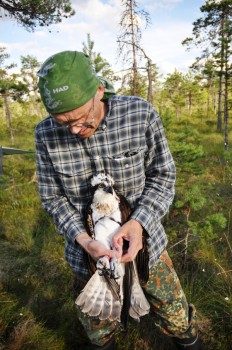
Before takeoff: Ilmari looks slightly annoyed here, as his ankle rings are checked by Harri Koskinen before his release. Photo: Juhani Koivu
An eight-year-old Finnish male, named Ilmari, has emigrated to Africa; on 13 October he was spotted in Cameroon. He set off for the journey on 16 September.
At the beginning of his journey, in Hattula, southern Finland, in August, he weighed 1,370g.
Ilmari is an osprey. The Osprey Foundation (more photos here too) fitted him with a Microwave GPS-Argos satellite transmitter (weighing just 30g and running on solar power). This allows osprey researchers to follow his journeys.
Actually Ilmari hasn’t emigrated – he will return to where he was born, in March 2013. As this is Ilmari’s first recorded migration, his final destination is not known. But one of his countrymen (-birds), carrying a transmitter, Jukka, liked it so much in Cameroon that he spent the winter there. Will Ilmari do the same? Watch this space!
The journeys of Finnish migrating birds are long (in this case, more than 6000 kilometres) and dangerous, so we wish Ilmari safe travel back home as well.
Best-selling books in September
18 October 2012 | In the news
Number one on the September list of best-selling Finnish fiction titles, compiled by the Finnish Booksellers’ Association, is Sofi Oksanen’s new novel Kun kyyhkyset katosivat (‘When the doves disappeared’, Like): which shot straight to the top of the list on its publication in August.
The huge national and international success of her previous novel, Puhdistus – in English, Purge – published in 2008 and also set in Estonia, has paved the way for Kun kyyhkyset katosivat; translation rights have been sold to several countries already.
Number two on the list was Riikka Pulkkinen’s third novel, Vieras (‘The stranger’, Otava). In third and fourth places were two new thrillers, Paholaisen pennut (‘The devil’s cubs’, Tammi), by Leena Lehtolainen, and Ylösnousemus (‘Resurrection’, WSOY), by Ilkka Remes.
In fifth place was Sirpa Kähkönen’s novel Hietakehto (‘Sand cradle’, Otava): number six in her series set in the Kuopio region of eastern Finland, during the Second World War.
The non-fiction (translated foreign as well as Finnish) list was topped by Blaine Harden’s Escape from Camp 14 (in North Korea; Gummerus). The variety of subjects on this list can be surprising: number two is about angels (Lorna Byrne’s A Message of Hope from the Angels, Otava), number three a biography of a Finnish ex-con turned surgeon (Veitsen terällä, ‘On knife’s edge’, by Arno Kotro & Christer Lybäck, Otava), number four about the Cold War in Finland (Jukka Tarkka: Karhun kainalossa, ‘Under the arm of the bear’, Otava) and number five about cupcakes (by Angela Drake, Otava)…

Mauri Kunnas: Aarresaari
The three best-selling children’s books were by seasoned Finnish authors: illustrator-writer Mauri Kunnas, with his tribute to R.L Stevenson, Aarresaari (‘Treasure island’, Otava), Aino Havukainen & Sami Toivonen, with Tatu ja Patu pihalla (‘Tatu and Patu outdoors’, Otava) and Sinikka Nopola & Tiina Nopola, with their Risto Räppääjä ja nukkavieru Nelli (‘Risto Rapper and Threadbare Nelly’, Tammi).
Misery me
Extracts from the collection of short prose, Mielensäpahoittaja (‘Taking offense’, WSOY, 2010)
Past pushing up daisies
Well, yeah, so I took offense when the doctor said that considering my age I’m in tip-top shape. His theory was that my 25-kilometre ski circuits would keep an old coot like me in shape, if they didn’t kill me first. He said if I were to start just sitting on the couch and waiting, then the Reaper would be on my back in no time.
I don’t ski for my health. I ski because it’s pretty in the forest, and when a body is sweating he doesn’t think a whole lot. More…
Punishment and delight
31 December 1995 | Archives online, Fiction, Prose
Extracts from Pimeästä maasta (‘Out of the Land of Darkness’, Kirjayhtymä, 1995). Interview by Jukka Petäjä
‘A being far more powerful and wiser than ourselves made the mould at the beginning of time and set it up for us as a model in order that we might shape ourselves correctly,’ the teachers said. ‘The Prime Mover’s form, actions and thoughts we are unable to understand. The Prime Mover gave us the mould in order that we should not remain formless. To this extent it has made itself known to us, although we do not deserve anything from it. It did not make the mould of bog-iron, which would soon have rusted in the cellar, but of a much better material of which we know nothing, and need to know nothing. Our duty is to aspire to fill the perfect mould given to us perfectly. Most of us will never be able to do so, for we are worthless, formless, unclean messes who deserve, many times over, all the pain of fitting the mould.’
Ulthyraja Tharabereghist did not dare ask anything, but there was something she would have liked to know. How the Prime Mover had made the mould, at least, and where it had found the materials, and what the Mover had gone on to do and where it had gone when the mould was ready and in the possession of the villagers. Even illicit thoughts were said to damage one’s shape: to be visible in it, if one knew how to look, and, of course, to be felt in the pains of fitting the mould… More…
This journey
30 September 1995 | Archives online, Fiction, poetry
Poems from Tämä matka (‘This journey’, 1956). Introduction by Jukka Petäjä
You took a planet
For Erik Lindegren
The stars arranged themselves
round a red magnet
by request,
and shaped fugitive systems and mirror reflections,
space’s sonorous grammar.
Oh, those hatched-out faces of the apathetic! –
and the grudge of those who can no longer read
(apart from cruel bibles, containing pressed roses and corpses).
Oh, ourselves! – here in the lonely sublunar place, hair and eyes in the wind, in our hands ignorance and boomerang-echoes.
Oh, these vaultings of the word! – changing skies
where the glyphs rise like distress flags.
I looked for a question whose answer is this mutabor. I kneel to gather up the shattered fragments of a glyph scored with the brilliant wounded secret where I lost my wings before my choosing fingers were formed.
More…
Punamustavalkea – 1918 valokuvissa [Red, black and white: 1918 in photographs]
31 March 2009 | Mini reviews
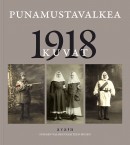 Punamustavalkea – 1918 valokuvissa
Punamustavalkea – 1918 valokuvissa
[Red, black and white – 1918 in photographs]
Toim. [Ed.by] Kukkonen, Jukka & Heikka, Elina
Helsinki: Valokuvataiteen museo /Avain, 2008. 167 p., ill.
ISBN 978-952-5524-65-9
€ 29, paperback
The book examines the Finnish Civil War and the photographic heritage of the year 1918 in articles which explore the background to the conflict. There are photographs of the ‘Red’ and ‘White’ guards, the events of the war, the prison of war camps, and the everyday lives of civilians. The publication presents the work of the photographers and film technicians who supported different sides in the conflict, and discusses the fate of the photographic archives after the war. A previously unknown collection of German propaganda pictures is also included. Archival research has demonstrated that there are more photographs from the period than was originally supposed; after the war they were confiscated and used to trace Red Guard soldiers who had gone missing. The book was published in connection with an exhibition at the Finnish Museum of Photography.
Finlandia Prize for Non-Fiction 2010
19 November 2010 | In the news
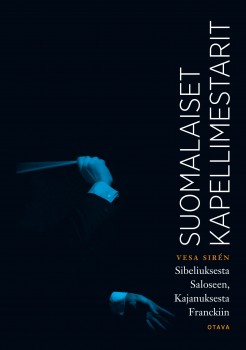 A massive tome running to 1,000 pages by Vesa Sirén, journalist and music critic of the Helsingin Sanomat newspaper, features Finnish conductors from the 1880s to the present day. On 18 November it became the recipient of the 2010 Finlandia Prize for Non-Fiction by the Finnish Book Foundation, worth €30,000.
A massive tome running to 1,000 pages by Vesa Sirén, journalist and music critic of the Helsingin Sanomat newspaper, features Finnish conductors from the 1880s to the present day. On 18 November it became the recipient of the 2010 Finlandia Prize for Non-Fiction by the Finnish Book Foundation, worth €30,000.
The choice, from six shortlisted works, was made by economist Sinikka Salo. Suomalaiset kapellimestarit: Sibeliuksesta Saloseen, Kajanuksesta Franckiin (‘Finnish conductors: from Sibelius to Salonen, from Kajanus to Franck’) is published by Otava.
The other five works on the shortlist were Itämeren tulevaisuus (‘The future of the Baltic Sea’, Gaudeamus) by Saara Bäck, Markku Ollikainen, Erik Bonsdorff, Annukka Eriksson, Eeva-Liisa Hallanaro, Sakari Kuikka, Markku Viitasalo and Mari Walls; the Finnish Marshal C.G. Mannerheim’s early 20th-century travel diaries, Dagbok förd under min resa i Centralasien och Kina 1906–07–08 (‘Diary from my journey to Central Asia and China 1906–07–08’, Svenska litteratursällskapet i Finland & Atlantis), edited by Harry Halén; Vihan ja rakkauden liekit. Kohtalona 1930-luvun Suomi (‘Flames of hatred and love. 1930s Finland as a destiny’, Otava) by Sirpa Kähkönen; Suomalaiset kalaherkut (‘Finnish fish delicacies’, Otava) by Tatu Lehtovaara (photographs by Jukka Heiskanen) and Puukon historia (‘A history of the Finnish puukko knife’, Apali) by Anssi Ruusuvuori.
Snowbirds
2 November 2011 | Extracts, Non-fiction
The short winter days of the northerly latitudes are made brighter by snow cover, which almost doubles the amount of available light. Reflection from the snow is an aid for photographers working outdoors in winter conditions. A new book, entitled Linnut lumen valossa (‘Birds in the light of snow’), presents the best shots by four professionals, Arto Juvonen, Tomi Muukkonen, Jari Peltomäki and Markus Varesvuo, who specialise in patiently stalking the feathered survivors in the cold
The photographs and texts are from the book Linnut lumen valossa (‘Birds in the light of snow’, edited by Arno Rautavaara. Design and layout by Jukka Aalto/Armadillo Graphics. Tammi, 2011)

Snowy owl. Photo: Markus Varesvuo, 2010
Finlandia Prize for Non-Fiction 2012
5 December 2012 | In the news
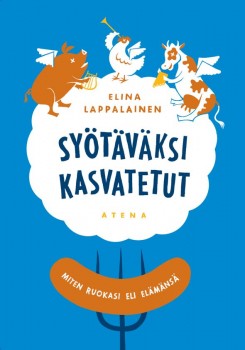 ‘It is one of the rules of quality journalism that writers aim for even-handed and impartial reporting, but at the same time challenge their respondents to account for their actions. Writers should also have the capacity for in-depth reporting and analysis,’ said Janne Virkkunen, former Editor-in-Chief of Helsingin Sanomat newspaper on 8 November, as he announced the winner of this year’s Finlandia Prize for Non-Fiction, worth €30,000.
‘It is one of the rules of quality journalism that writers aim for even-handed and impartial reporting, but at the same time challenge their respondents to account for their actions. Writers should also have the capacity for in-depth reporting and analysis,’ said Janne Virkkunen, former Editor-in-Chief of Helsingin Sanomat newspaper on 8 November, as he announced the winner of this year’s Finlandia Prize for Non-Fiction, worth €30,000.
The winner, Syötäväksi kasvatetut. Miten ruokasi eli elämänsä (‘Grown to be eaten. How your food lived its life’, Atena) by the young journalist Elina Lappalainen, is her first book.
‘The book could have fallen prey to the sensationalism of which we all probably have experience in the media, at least. This writer was able to avoid the temptation,’ Janne Virkkunen said.
The other works on the shortlist of six were as follows: Arabikevät (‘The Arab spring’, Avain), a study of spring 2011 in the Arab world by Lilly Korpiola and Hanna Nikkanen, Norsusta nautilukseen. Löytöretkiä eläinkuvituksen historiaan (‘From the elephant to the nautilus. Explorations into the illustration of animals’, John Nurminen Foundation) by Anto Leikola, Kevyt kosketus venäjän kieleen (‘A light touch to the Russian language’, Gaudeamus) by professor of Russian Arto Mustajoki, Karhun kainalossa. Suomen kylmä sota 1947–1990 (‘Under the arm of the Bear. Finland’s Cold War 1947–1990’, Otava) by Jukka Tarkka and Markkinat ja demokratia. Loppu enemmistön tyrannialle (‘Market and democracy. The end of the tyranny of the majority’, Otava) by banker Björn Wahlroos.
Re-inventing the book: on the papernet, pod and the unbook
20 May 2009 | Articles, Non-fiction

Mind-map: using the papernet to produce books just for you. - Photo: Brian Suda
Just as Books from Finland finally goes online, the brightest minds of the internet are forecasting a return to paper. In the first of a series of articles, the poet and scholar Teemu Manninen celebrates the second coming of the book
Last week I did something I’ve never done before. I uploaded the manuscript of my third book on to the website Books on Demand, an internet print-on-demand (‘pod’) service, chose the format (a large 19×22 cm size with a hard cover), selected a picture for my cover, copy-pasted a poem by Clark Ashton Smith – an American science fiction and fantasy writer – on the back flap and ordered a copy. More…
No longer I:
30 September 2001 | Fiction, poetry
From Voittokulku (‘Triumphal march’, Tammi, 2001). Illustrations by Jukka Korkeila
Tiamat [Bloody moon]
The goat’s cheese that I have just succeeded in swallowing is now grazing in my gullet before its last metamorphosis. Soon it will be washed away into the endless system of tubing, the network of veins that proliferates beneath the paving stones. The body expels the waste and another receives it. Some people believe they are different bodies, but on thorough examination it is clear that they are both part of one and the same liquid-channeling system. I speak of a body which is a city, of liquids which surge beneath the streets, of subterranean waters. I lift a manhole cover and behold a sea which you could never dream of. The sea is a living creature and knows me better than I do myself. When I close my eyes, I see a crayfish that climbs out of the water and stretches out its pincers toward a bloody moon. What does it mean? Of that I do not wish to speak a single word.
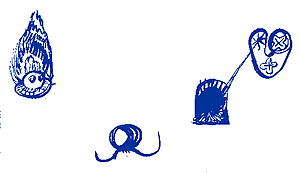
This is a map
30 June 1992 | Archives online, Fiction, poetry
from Tasanko 967 (‘Plain 967’, Kirjayhtymä, 1991). Introduction by Jukka Petäjä
and he woke to the babble of a hungry baby and his palate, his mouth was dry and waking he recalled images of bodies battered in the violent overthrow of Vilnius TV Station and he dozed off into the sound of suckling


